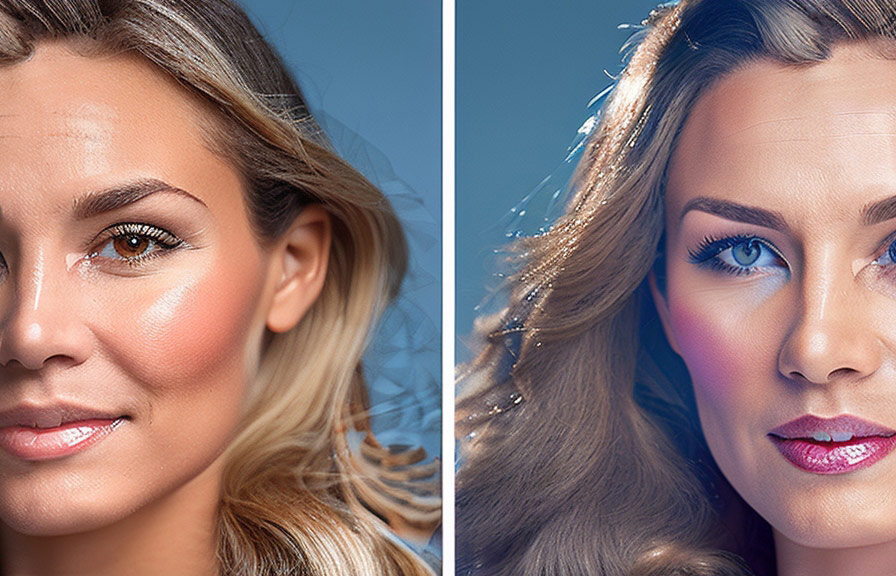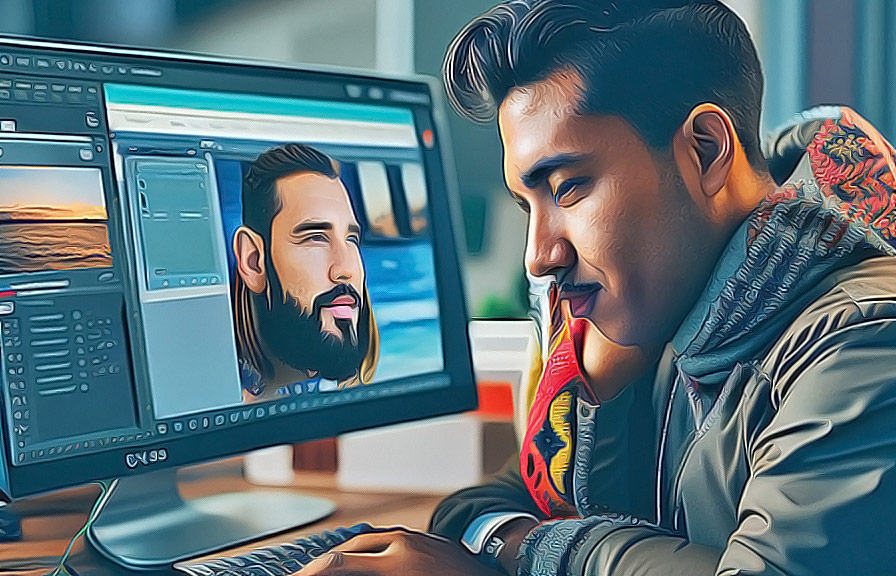The art of capturing the essence of a person or group of people through photography is known as portraiture. today, portrait photo editing has become an essential part of the photography process, allowing photographers to enhance their portrait photos and achieve a professional, polished look.
In this post, we'll explore the world of portrait retouching and portrait editing, and provide you with valuable tips and techniques to master portrait editing photoshop skills.

The importance of portrait photo editing
Portrait photo editing is the process of enhancing and refining portrait images to achieve the desired look and feel. this involves a combination of various techniques, such as adjusting lighting, colors, and contrast, as well as more advanced portrait retouching methods to remove blemishes, smooth skin, and enhance facial features.
With the rise of digital photography and powerful editing software like adobe photoshop, portrait photo editing has become an integral part of the photography workflow, allowing photographers to create stunning, professional-quality portrait images.
Key techniques in portrait editing photoshop
To master portrait photo editing, it's essential to understand and master a range of techniques and tools available in photoshop and other editing software. here are some of the most important techniques you'll need to learn:
1. skin retouching
One of the most critical aspects of portrait retouching is achieving smooth, natural-looking skin. there are several techniques you can use to accomplish this:
- frequency separation: this advanced technique separates the image into two layers one for texture and one for color. by working on these layers independently, you can retouch the skin without losing its natural texture.
- spot healing brush: use this tool to quickly remove small blemishes and imperfections, such as pimples or stray hairs.
- dodge and burn: this technique involves selectively lightening (dodging) and darkening (burning) areas of the image to enhance the subject's facial features and create a more three-dimensional appearance.
2. enhancing the eyes
The eyes are often the focal point of portrait photos, so it's essential to give them some extra attention during the editing process. some tips for enhancing the eyes in portrait editing photoshop include:
- brighten the whites: use the dodge tool to gently brighten the whites of the eyes, being careful not to overdo it, as this can create an unnatural appearance.
- enhance eye color: create a new layer with a blend mode of "soft light" or "overlay," and then use a soft brush with low opacity to paint over the iris, bringing out the natural color and vibrancy.
- add catchlights: catchlights are the small reflections of light that appear in the subject's eyes, adding depth and sparkle. if your portrait image lacks catchlights, you can create them using a soft white brush on a new layer set to "screen" mode.
3. refining the hair
A well-groomed hairstyle can make a significant difference in the overall appearance of your portrait images. some techniques for editing hair in portrait photo editing include:
- remove flyaways: use the spot healing brush or clone stamp tool to remove any stray hairs or flyaways that may be distracting from the overall image.
- enhance hair color and shine: create a new layer with a blend mode of "soft light" or "overlay," and use a soft brush with low opacity to paint over the hair, adding depth and richness to the color. you can also use the dodge tool to add subtle highlights and create the appearance of shine.
4. adjusting the background
The background of your portrait images plays a crucial role in the overall composition and aesthetic. some tips for editing the background in portrait photo editing include:
- remove distractions: use the clone stamp or content-aware fill tools to remove any unwanted objects or distractions from the background.
- blur the background: if your portrait image has a busy or distracting background, you can use the gaussian blur or lens blur filters to create a more pleasing, out-of-focus effect.
- enhance colors and tones: adjust the background's colors and tones using adjustment layers, such as curves, levels, or hue/saturation, to create a more cohesive and visually appealing image.
Mastering portrait photo editing through practice and experimentation
Becoming proficient in portrait photo editing and portrait retouching requires practice, patience, and a willingness to experiment with different techniques and tools. start by familiarizing yourself with the various tools and techniques available in photoshop and other editing software, and then apply these skills to your own portrait images.
As you gain experience and confidence in your editing abilities, you can start to develop your own unique style and approach to portrait photo editing. don't be afraid to experiment with new techniques or push the boundaries of your creativity the moreyou practice, the more you'll learn and grow
As a portrait editor.
Some lesser-known tips for portrait photo editing
Here are a few lesser-known portrait editing tips that can help you elevate your portrait images even further:
- liquify tool: use this tool sparingly to subtly refine facial features, such as slimming a jawline or adjusting the shape of the nose, but be cautious not to distort the subject's natural appearance.
- color grading: apply color grading to your portrait images to create a specific mood or atmosphere. experiment with different color combinations and adjustment layers to achieve the desired effect.
- add grain: adding a subtle amount of grain or noise to your portrait images can create a more filmic, vintage look. use the "add noise" filter in photoshop, but be sure to keep the amount relatively low to avoid detracting from the image quality.
Conclusion
Portrait photo editing is an essential skill for any photographer looking to create stunning, professional-quality portrait images. by mastering the various techniques and tools available in photoshop and other editing software, you can enhance your portrait photos and bring out the best in your subjects.
Practice and experimentation are key to becoming a skilled portrait editor, so don't be afraid to push your creative boundaries and develop your own unique approach to portrait retouching. and remember, the more you practice, the better you'll become at transforming your portrait images into true works of art.
